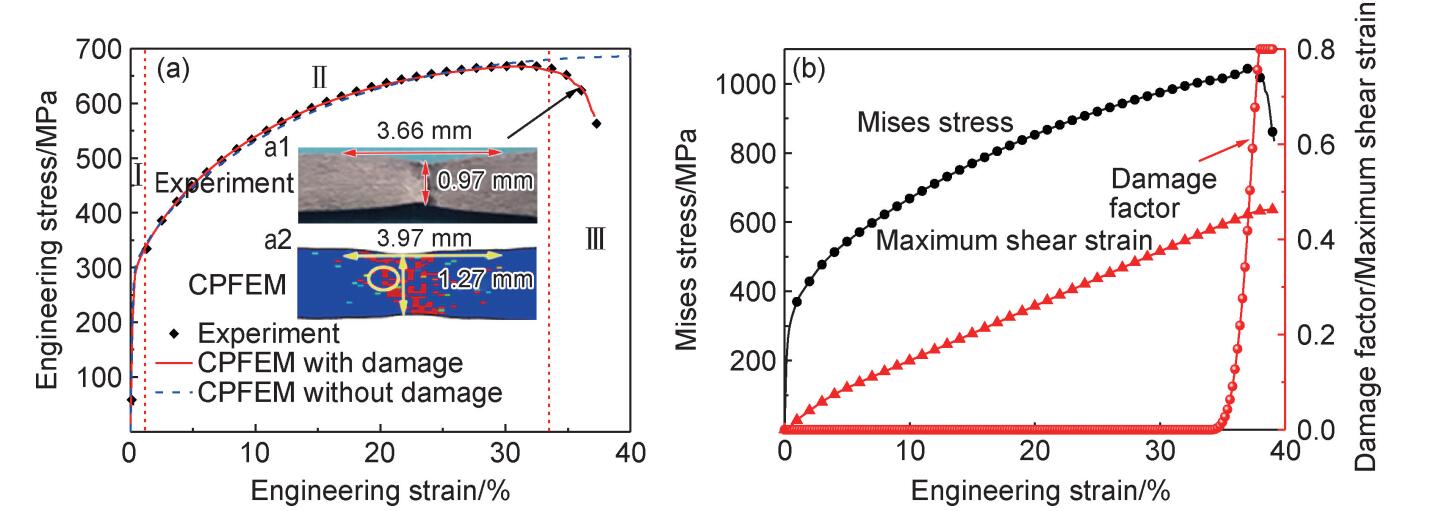 PDF(10344 KB)
PDF(10344 KB)


考虑位错密度和损伤的NiCoCrFe高熵合金晶体塑性有限元分析
胡广, 赵英杰, 马胜国, 张团卫, 赵聃, 王志华
材料工程 ›› 2022, Vol. 50 ›› Issue (3) : 60-68.
 PDF(10344 KB)
PDF(10344 KB)
 PDF(10344 KB)
PDF(10344 KB)
考虑位错密度和损伤的NiCoCrFe高熵合金晶体塑性有限元分析
 ({{custom_author.role_cn}}), {{javascript:window.custom_author_cn_index++;}}
({{custom_author.role_cn}}), {{javascript:window.custom_author_cn_index++;}}Crystal plasticity finite element analysis of NiCoCrFe high entropy alloy considering dislocation density and damage
 ({{custom_author.role_en}}), {{javascript:window.custom_author_en_index++;}}
({{custom_author.role_en}}), {{javascript:window.custom_author_en_index++;}}
| {{custom_ref.label}} |
{{custom_citation.content}}
{{custom_citation.annotation}}
|
/
| 〈 |
|
〉 |